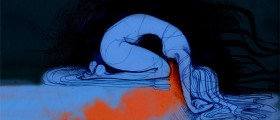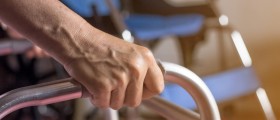
Vertigo is commonly described as a type of dizziness which triggers a sensation that the world around you is spinning. Also, vertigo makes people feel like they are moving when they are actually standing still or resting.
Vertigo may appear hand-in-hand with blurred vision, headaches, concentration difficulties, increased chances of suffering from motion sickness, along with sweating, nausea, vomiting and a decrease in cognitive functions. All in all, vertigo can trigger numerous problems and complications which can seriously interfere with a person's life.
Vertigo Treatment
Since vertigo may stem from numerous underlying conditions, the treatment for it varies, depending on these factors. Sometimes, for example, a specific type of medications that a patient is taking may cause vertigo as a side-effect. Then, all an individual needs to do is to stop taking the drugs in question. Yet, if the underlying reason behind vertigo is more severe, the treatment may involve more complex approach.
The Vestibular Rehabilitation Therapy
The VRT approach to treating vertigo is necessary if the vestibular system has been affected. It involves specific exercises which help the sufferer accommodate to the causes of vertigo, potentially removing them. Basically, the brain of the patient receives training which helps it develop an alternative system of balance and coordination, bypassing the current, vertigo-causing, one. Here, the success of the treatment relies on the physical and mental health of the patient, as well as his/her age, motor skills, and cognitive functions.
These exercises are to be practiced at home regularly, with or without assistance of the therapist. As the patient advances with his/her vertigo control, the exercises become more complex as well, leading to recovery, through learning how to perfectly balance the head movement, along with eye coordination and walking.
Other Types of Treatment for Vertigo
If vertigo is triggered by Meniere's disease, decreasing one's salt intake and introducing diuretic medications are both parts of the treatment. Moreover, antibiotics may reduce any inflammation, being administered directly into the affected ear.
When diplopia, ataxia and weakness occur along with vertigo, there are great chances that vascular ischemia is triggering the problem. Then, the ischemic attacks are taken care of and, through blood pressure control, lowering of cholesterol levels and inhibition of the platelet function, the vertigo is successfully treated.
Migraines might lead to vertigo too. Then, dietary changes through abstaining from chocolate, coffee and alcohol are necessary, along with the introduction of regular exercise programs and certain medications.
Finally, if too much calcium is accumulated in the semicircular canals of the ear, special movement maneuvers are required in order to remove the deposits, moving it back to the vestibule, where it belongs.

















Your thoughts on this
Loading...